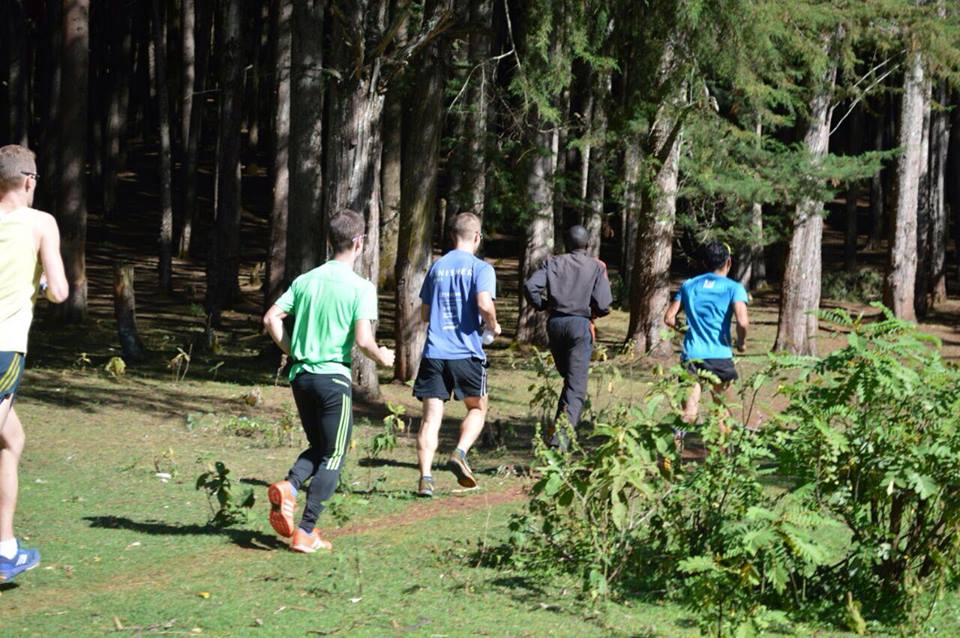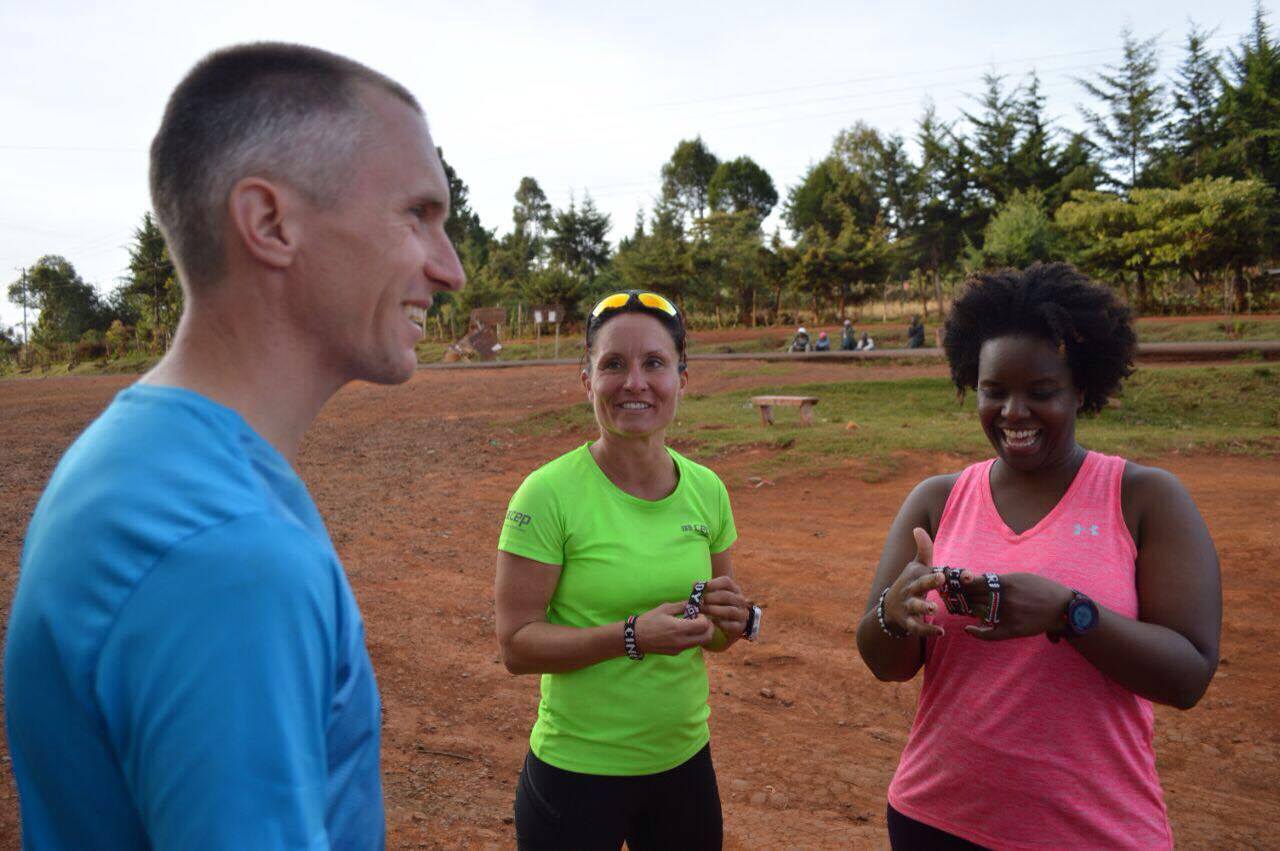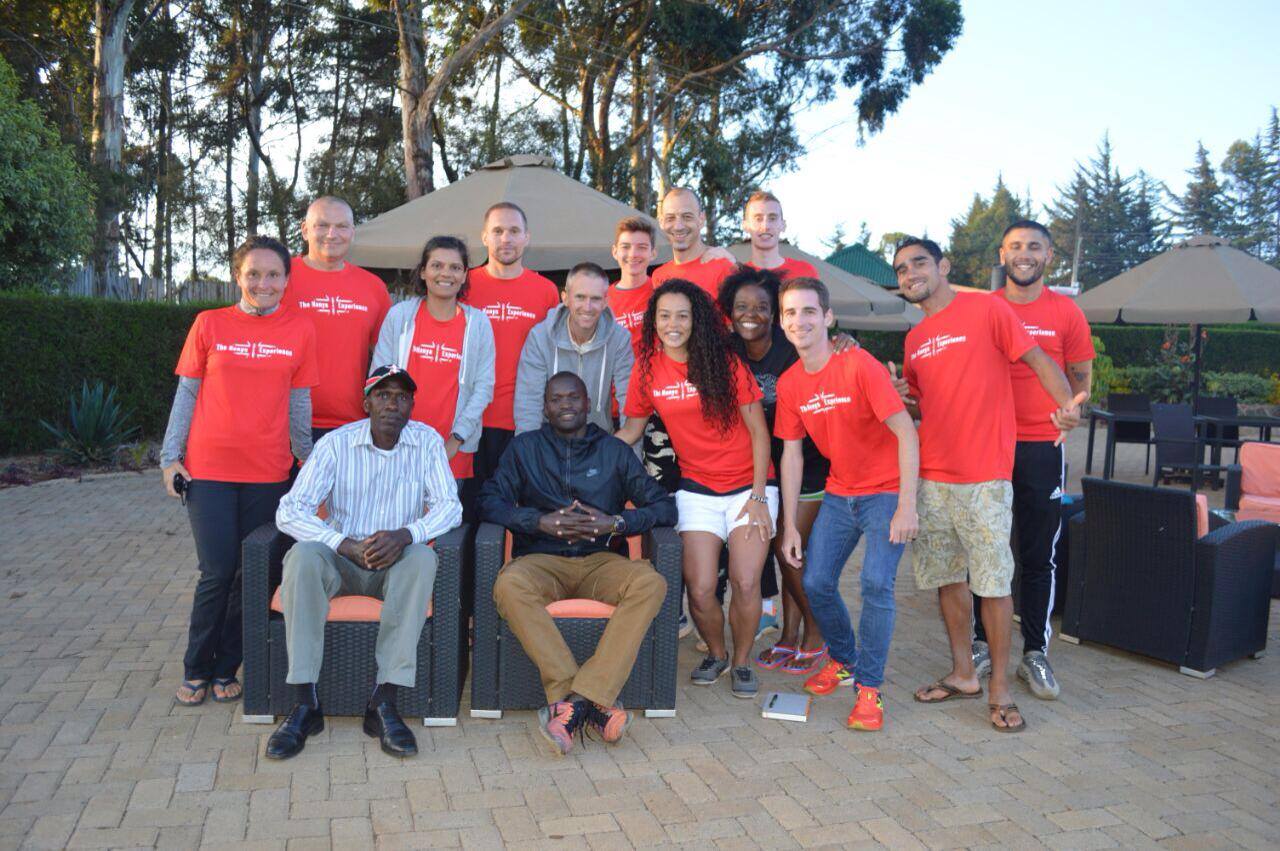This blog discusses the use of weight training for distance runners.
As a coach of an endurance sport, there are some questions I am often asked on the topic of weight training. Should distance runners lift weights at all? It does not look like something specific to running, so what is the point? Isn’t it better to just run uphill? If we do lift weights, how should we go about it? Today I want to give my view on that.
Many professional runners do weight lifting exercises, like squats and lunges. In Kenya it’s not that common, but in other parts of the world it is. I don’t believe weight lifting should be seen as something magic, which will enable you to break all your personal bests, but it can definitely contribute to being a better athlete.
Why should you use weight training?
For me, there are 3 reasons for doing weight lifting exercises:
- When we lift weights in the proper way, we recruit more muscle fibres than when we run. We call this neuromuscular stimulation: we teach the body (brain, spinal cord) to send signals to other parts of our muscles. Parts that we normally don’t use when we run. We hope/think, that stimulating these other muscle parts, will lead to us being able to ALSO recruit these muscles when we run, not only when lifting weights. And of course we do other stuff, like hill running, to teach our body to continue stimulating these muscles.
- By putting a high load on our body, we make all structures, including tendons and joints, stronger. From my experience, runners who do regular weight training are able to handle a higher training load, in terms of mileage. They can simply train harder without getting injured.
- Research shows that stretching in isolation probably does not help in making us more flexible, or in contributing to an increased range of motion whilst running. However, stretching in combination with a weight, does seem to help. So for instance, if you make a lunge, which means you basically make a large stride/step while you carry a weight, that can promote a bigger range of motion (and thus give you a bigger stride when running).
For me, all three of these points are significant and provide a positive reason to utilise weight training as distance runners.
One major difference between professional runners and amateur runners is stride length. Professional distance runners are able to use longer strides and over a longer period of time. This is also the case when we look at professional marathon runners.
Of course, we can’t simply say that this is all because of strength, otherwise all weight lifters would be great runners and also, Usain Bolt who can make very big strides, would be the best distance runner of all time. It has first and foremost to do with their lungs, heart and other muscles being able to transport and use large amounts of oxygen (which is something that is lacking in Bolt, so he can only maintain those long strides for a short moment). Secondly, it has to do with their (Achilles) tendons being able to work as an elastic band, so they use their bodies natural ‘spring’ to propel themselves forward (which can also be trained, by the way).
However, at the same time, we should not deny the strength/power component. Many runners could increase stride length and improve running form generally, if they incorporated some strength and power work. Doing weight lifting is the base for that! If you combine that, or follow it up, with plyometric exercises (jumping), hill sprints, longer hill workouts and in general fast running, you teach the body to translate that strength that you built in the gym, into power. Power means that you can apply that strength very fast, which is what you need when you run. Ideally, when running, we touch the ground each step for only 0.1 seconds, so we have to apply our strength in that 0.1 second (which is called power). So by working on strength and power, we increase your stride length (improve our running form) and learn to maintain that stride length during the race (which we call strength endurance).

KE Founder Gavin training in Iten as Coach Hugo watches on in the background
A practical example
Many runners ‘sit down’ a bit when they run, which means they waste energy and it impacts their performance. This can often be attributed to weak hamstrings. Training the hamstring by doing weight exercises, can therefore be the first step in helping them to improve their running form.
So this is why I give many of my runners, especially the professional ones, weight training. I don’t expect any fast result from it, I don’t expect miracles to happen, it’s just part of the whole process and it’s something that over the long term will pay off. It will help them to have the best possible running form and will help them to train harder compared to those who don’t do weight training because their tolerance to workload has increased, (they don’t break down/become injured).
How to incorporate weight training into my running program?
How do we do weight training? We take 3-4 exercises. Each exercise we do 2-3 sets of 8 repetitions. Not more than that. This is because we are in the gym to teach our body to recruit more muscle fibers (which is our way of getting stronger), so we need a high weight and a small number of repetitions. We don’t want our muscles to grow big, so we don’t do too many repetitions. We also have to consider that weight training is only a small part of the overall program and that the athletes do not have unlimited reserves of energy to give to this side of the training. If it heavily impacts their main training (the running) then we have missed the point completely.
We don’t go to exhaustion, but we still do a relatively high weight. For instance, when my runners do squats, I tell them; “You should do 8 reps and feel like you could do another 2-3 more, but not 8 more. If it feels easy, add some weight”. Especially with the squat exercise, we start with a decent but comfortable weight and try to add some weight once in 2-3 weeks. They go up to 150% of their body weight. Sometimes even slightly more (it depends on the type of runner and also on whether they do the squats with a slight split stance focusing on 1 leg, or the more traditional 2 legged versions.)
Of course, lifting weights can be tricky, so when you start with it, caution is important. Make sure you have someone supervising you, start with a low weight (or only the bar), until you feel like you have the right technique. Only then can you start to add some weight.

Kenya Experience runners in Singore Forest
How often should runners use weight training?
Those of my athletes who do weight training, do this once a week for a great part of the season. We stop with it only a few weeks before the most important competition. In the beginning they will feel some stiffness and muscle pain, but after a while that gets less or is entirely gone. Still, I prefer to give weights the day before an easy run or a long run, so that it does not affect them. Or, if there is no other option, the day before a lactic threshold session. We don’t do weights the day before an important track workout and definitely not the day before hill sprints.
For me the 3 most important weight exercises are:
- Squats (Either with 2 legs, or in a split stance position)
- Lunges
- Straight Leg Deadlift, or ’Good Morning’
We will use the (soon to be launched) Kenya Experience YouTube channel to explain more about these specific exercises.
Thanks for reading,
Hugo

About the author
Hugo van den Broek is Head Coach for the Kenya Experience. He is responsible for leading all coaching activities on our running camps in Iten and acts as a mentor and guide to our assistant coaches. Hugo is a former international athlete with a best marathon time of 2hr 12. He represented the Netherlands on many occasions in international events, and since his retirement from competition has made a successful transition into the world of coaching.
The Kenya Experience – Running Camps in Iten Kenya for runners of all levels

Our running camps provide an inspirational location, expert coaching and a supportive group environment for runners of all levels.With an emphasis on ‘doing it the Kenyan way’ the camps include guided runs, practical workshops and an exciting itinerary outside of the actual training itself which will immerse you inside the Kenyan running scene. You will meet and learn from top Kenyan runners & coaches and interact with the local community in Iten under the guidance of our expert staff.Want to know more? Click here for details on our training camps.

Recent Comments